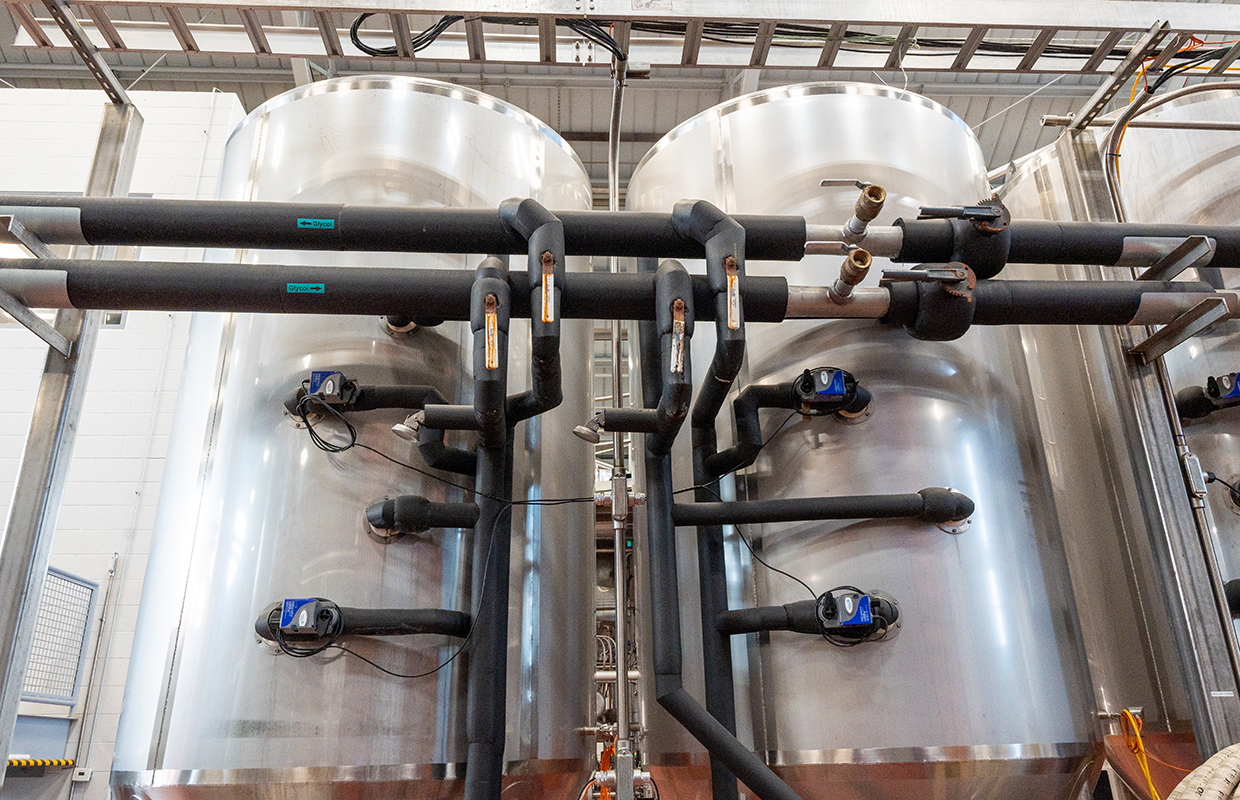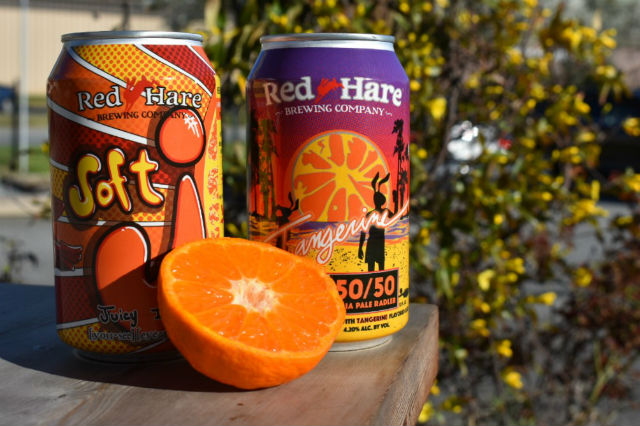
There is an important science behind your beer production that involves glycol and cold room management. Keeping this aspect of your brewery in tip-top shape can help determine the quality of your product and eventually a customer’s perception of it.
The most important part of keeping Church Street Brewing’s chiller up and running is keeping the fins and coils clean, explained Head Brewer Sean Gregor.
“We clean them three to four times a year, especially in the spring and fall,” he said. “This allows out liquid and suction pressures to stay in their optimal range.”
Church Street, a brewery located in the Chicagoland area of Itasca, Illinois has a two-stage chiller, so Gregor said they switch the set points at the start of each month so that they can alternate which compressor leads and which lags.
“We also check glycol solution a couple times a year and add more glycol when needed,” he said. “As our system has gotten older, we have also begun to run descaling cycles on our heat exchangers for better heat transfer.”
Casey Murphy, the Maintenance Manager for Cincinnati’s MadTree, said that they perform inspections and regularly scheduled maintenance per the manufacturer’s recommendations.
“We use an HVACR contractor that specializes in glycol chillers to perform quarterly inspections of the unit that are beyond the skillset of our team,” Murphy said.
Daily, the MadTree maintenance team checks the chiller for the following:
- Condenser coil cleanliness
- Glycol temp at discharge compared to setpoint and making sure that there is a temp drop across the unit
- Moisture in the refrigerant via the indicator
- Alarm history
- Oil level
- Refrigerant level in the evaporator sight glass
System Fixes
What if a chiller is chilling uncontrollably, has stalled or a tank has crashed too early or needs to be warmed back up? There are ways to work through these issues both Gregor and Murphy pointed out.
“Usually this issue has more to do with the solenoids on the jackets rather than the chiller,” Gregor said. “Either we need to switch out the body of the solenoid if glycol is not flowing when it is supposed to, or we switch the diaphragm when glycol is flowing that should not be.”
If a tank is chilling uncontrollably, Murphy said to shut down the manual isolation valve to begin the troubleshooting process.
“Verify [that the] house glycol temp is at desired setpoint,” he said. “Verify that glycol valve feeding tanks are functioning properly. Then verify the temperature transmitter for the tank is functioning properly and calibrated and verify flow rate of glycol through the jackets is at the desired setpoint.”
If chilling has stalled, he shared that you should verify that glycol is flowing through the jackets and that the temperature transmitter for the tank is functioning properly and calibrated. Check to make sure that glycol concentration and temperature setpoint are at desired specification.
“Bleed air from the high point bleed valve of the tank glycol jackets,” he said, and then use an external heat exchanger to assist in chilling the product.
“We have no means of raising a tank temperature actively with our system,” Murphy said. “If we feel that the batch can be saved, we shut off the glycol supply to the tank and hook up an external recirculation circuit with a pump and hoses to speed up the warming process.
“We may also transfer the batch to a different tank if available.”
Church Street will do the same thing and find an empty and clean tank, and recirculate hot water from the HLT through it.
“We shut off every tank except the empty tank and the one that needs to be heated, then we turn the condenser off but keep our glycol pump running,” Gregor said. “Usually the glycol gets a little over 100 degrees and if we recirc the cold tank we can bring it up in a couple of hours.”
Looking to Upgrade?
If your brewery has grown, updating your chilling system needs to be a top-tier priority.
“We cannot stress how important it is to consult with a mechanical/process engineering firm during the design/planning phase to mitigate as many potential issues as possible,” Murphy said. “Addressing issues during construction is much more disruptive and costly.
Oversize the system and add a bypass if need be, Gregor and Murphy said.
“I never hear anyone wishing they had a smaller system,” he said. “Remember to keep as much water in your glycol as you can get away with to help with heat transfer.”
Cold Room Management
Church Street has a Ranco controller on its solenoid and a standard condenser outside its taproom cooler. They use an insulated cargo container with cool bots instead of a normal walk-in and it’s worked out really well, Gregor said.
The brewery doesn’t have air conditioning in the building so high humidity in the summer can mess with the system.
“We have found that bringing up the set point two to three degrees can cut down on ice significantly,” Gregor said. “There is a defrost controller on our system, but if I see ice on the coil I pull the leads off the compressor contactor and manually put the system into a defrost cycle before airflow is cut down.”
Murphy said to think about how often and long will the door be open as just one of a series of questions you need to have an answer for while determining the best cold room set-up.
“Is the space made for storing already chilled material or chilling warm product,” he said. “How much of a heat load will go into the cold space at one time and how fast does it need to get down to temp?
“Should you have redundant systems in the space to reduce the risk of losing all cooling capacity in that space?”
Avoid Spoilage
Murphy said to even look ahead and think about purchasing a redundant smaller system to help mitigate a single mechanical catastrophic failure resulting in loss of all your product.
Taking local and electronic temperatures/pressures every day has allowed Church Street to catch equipment failures before they get out of control.
“We also turn off the jackets on our tanks once they are nearing terminal to cut down on any possibility of a software/hardware issue crashing a tank that shouldn’t be,” he said.
Power outages have resulted in MadTree’s system faulting and not coming back on with the power, which led to the spoiling of a batch.
“We now have a system to let us know if there was a power outage at the brewery, and our maintenance team has a power outage checklist to ensure all systems have come back online,” Murphy said, giving a good tip to those thinking about the importance of preventative measures.




Be the first to comment